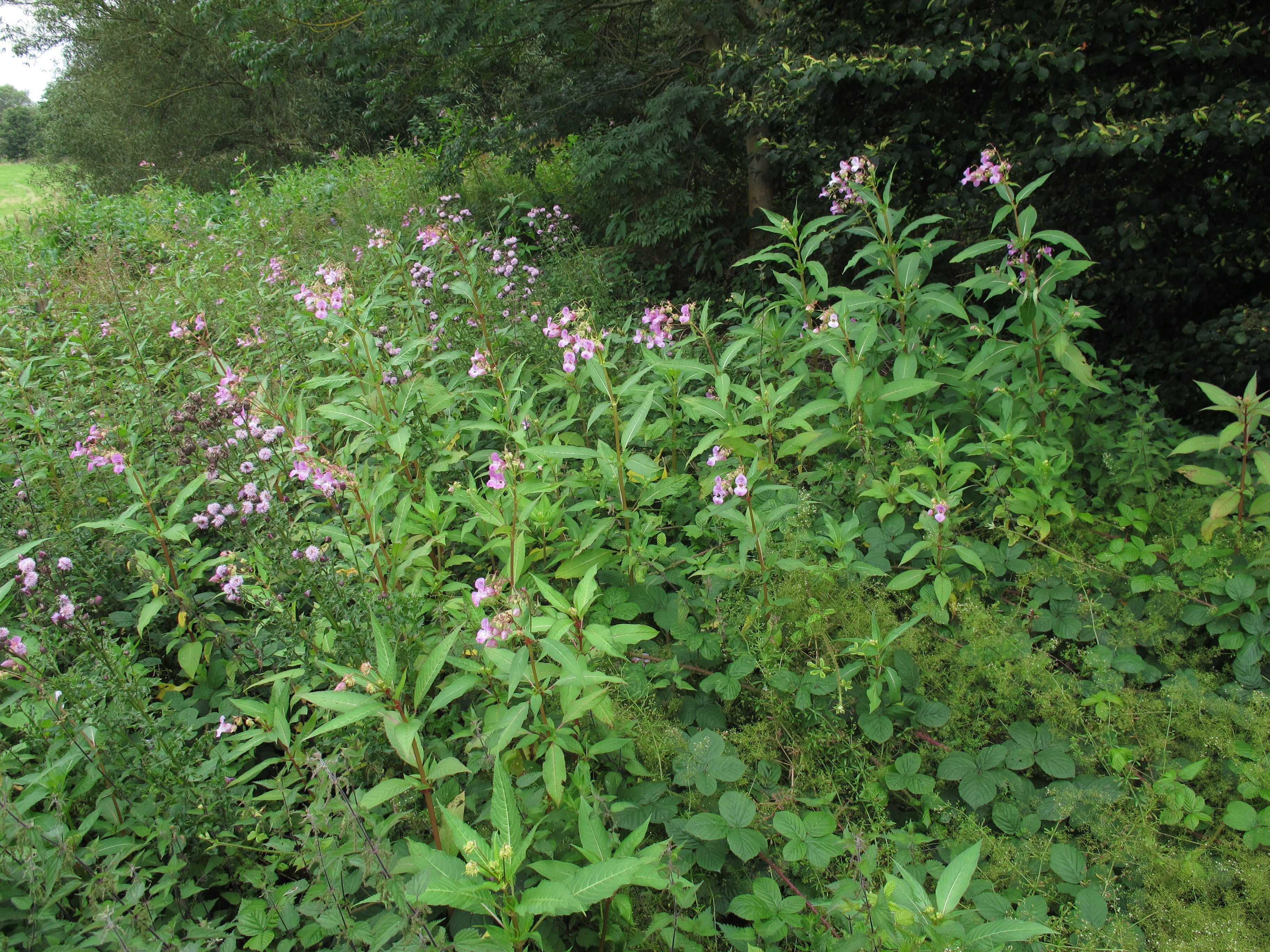Himalayan Balsam
Introduction
Impatiens glandulifera, Royle.
Himalayan Balsam is a member of the Balsaminaceae family; also known as Policeman's Helmet because of the shape of the flowers.
Himalayan Balsam has been added to Schedule 9 by The Wildlife and Countryside Act 1981 (Variation of Schedule 9) (England and Wales) Order 2010: this means that it is illegal to plant or otherwise cause to grow Himalayan Balsam in the wild.
Himalayan Balsam colonises areas rapidly and quickly outcompetes the surrounding vegetation and reduces diversity. Himalayan Balsam is an annual plant; growing from seed, flowering and setting seed within a year before dying. All Himalayan balsam plants germinate from the previous year"s seed. Annual plants do not have the need for extensive root systems. Himalayan Balsam grows very rapidly which necessitates readily available access to soil moisture which is why it has colonised riverbanks which have an abundance of moisture and nutrients. This causes a problem because Himalayan Balsam does not have an extensive root system and it is crowding out perennial plants that bind the riverbanks with their root systems. During flood events the riverbanks are then vulnerable to floodwater because of the lack of perennial plants. There are also claims that the height of the plant causes a problem by restricting the flow of the river. It is, however, a good nectar plant for bees and wasps in late summer.
Himalayan Balsam is not a native species to the UK originating, as the name implies, in the Himalayas. The seeds of Himalayan Balsam are viable for up to two years and are commonly transported in waterways. The first indications that this would be a potentially invasive plant were the county Floras showing Himalayan Balsam tracing the line of waterways through the counties. Himalayan Balsam is tolerant of shade and it is now impossible to map the location of rivers using distribution maps of Himalayan Balsam because it has moved into woodland habitats and moist soils too.
Identification
Himalayan Balsam is the tallest annual plant in the UK growing up to 3 metres in height a year. It has highly visible pink flowers on fleshy hollow stems that are green in the spring but become red as the year progresses. The elliptical leaves and side branches arise in whorls of 3-5 from stem joints. A distinctive characteristic of the plant are the seed capsules which provide its alternative name "Touch-me-not" Balsam. The capsules open explosively when touched spreading the seeds up to 7 metres enabling the plant to colonise new areas. As an annual it has a very shallow root system, barely adequate for its tremendous height.
Cultural Methods Of Control
The shallow roots allow the plant to be pulled up right up to June when it flowers. Cutting, strimming or pulling on a regular basis for about three years will be effective and may even eradicate the plant from isolated sites. Plants must be cut below the lowest node to avoid reflowering. Grazing by cattle and sheep is effective from April throughout the growing season. It should be continued until no new growth occurs.
Chemical Methods Of Control
Professional Pesticides
Himalayan Balsam tends to grow near water and therefore the selection of an appropriate herbicide is limited. Guidance notes for the use of herbicides in or near water have been published by the Environment Agency. Glyphosate is the active ingredient in Roundup ProVantage and Roundup ProActive. Glyphosate is a very effective herbicide that starts to degrade almost as soon as it is applied however it is not selective and will kill any plant it comes into contact with. Spraying needs to occur before the plant starts to flower but after the seed leaves have disappeared - from April to June to ensure that all the plants available for germination can be controlled. A weed wipe can be used for small infestations although in all likelihood a small area would be easier to control by physically removing it by pulling it up. The Injectordos Pro Stem Injection Kit will limit the herbicide to treating specific plants, creating minimum disturbance in the surrounding vegetation and enabling the surrounding vegetation to spread quickly back into affected areas. This method can also be used in conditions which would prevent foliar application of a herbicide. 2-4-D amine is the active ingredient in Depitox 500, a selective herbicide that controls broadleaved weeds and correctly applied will not damage grasses thereby preventing new Himalayan Balsam seeds from becoming established however 2-4-D amine is a professional herbicide and requires the user to have a pesticide application license.
Domestic Weed Killers
Glyphosate is the active ingredient in Barclay Gallup Home & Garden, a full strength glyphosate. Barclay Gallup Home & Garden is a very effective herbicide that starts to degrade almost as soon as it is applied however it is not selective and will kill any plant it comes into contact with. Spraying needs to occur before the plant starts to flower but after the seed leaves have disappeared – from April to June to ensure that all the plants available for germination can be controlled. Infestations in a small area are easier to control by physically removing it by pulling it up.

